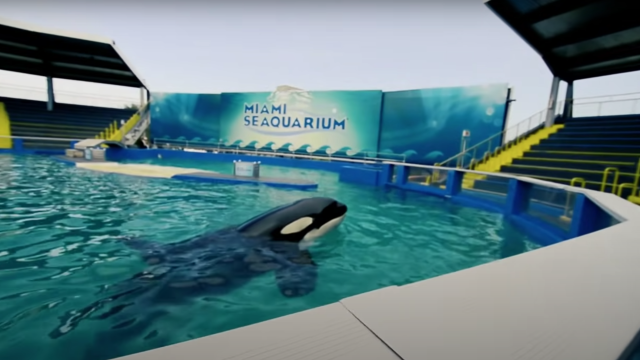One of the world’s most famous orcas is going back to the ocean after more than 50 years in captivity, following years of activism pushing for her release.
On Thursday, the Miami Seaquarium, home of the orca named Lolita, also known as Tokitae, announced that it is planning to release her back into her natural habitat in the Pacific Northwest within the next two years. The effort is part of a first-of-its-kind legal agreement between the Seaquarium and Friends of Toki, a nonprofit organisation dedicated to the orca’s welfare.
“There’s a lot of work to be done,” Pritam Singh, co-founder of Friends of Lolita, said in a press conference Thursday. “But I think we’re up to the task.”
Moving Lolita from Florida back to the Pacific requires that federal regulators, which oversee the care and keeping of wild animals in captivity, sign off on the move. It’s also going to be a pricy endeavour: while specific numbers have not been provided, the cost could soar above $US1 ($1) million, and it may require the use of a military plane or a 747. The transport will be bankrolled by Jim Irsay, owner and CEO of the Indianapolis Colts.
Lolita was taken from the Puget Sound when she was around 4 years old in 1970, from a group known as the L pod. Her capture — an infamous incident that saw 80 orcas from an endangered population rounded up, seven captured, and five killed — was part of a rush in the late 1960s and early 1970sto collect orcas from the wild for shows at aquariums, marine parks, and other facilities. Lolita was originally given a Chinook name, Tokitae, but was renamed upon her arrival in Miami.
Initially, Lolita was kept with a mate, a male named Hugo, who was prone to slamming his head against the wall of their glass tank. After 10 years together, Hugo died after running into the wall with particular force, and Lolita was moved to a smaller tank — around 10.67 m wide, just 4.57 m longer than her body. It’s the smallest orca tank in the U.S. She was retired from performance last year, the result of an agreement between The Dolphin Company, which bought the Seaquarium in 2021, and federal regulators, who gave the company a new permit under the condition that Lolita no longer be on display.
According to advocacy group Whale and Dolphin Conservation, there are currently 54 captive orcas in the world, 25 of which were captured from the wild. A growing movement over the past few decades has pressured organisations with captive orcas still in their possession to retire the animals and move them back to the wild. Organisations that own the orcas — including, notably, SeaWorld, which still has 18 of them at their various parks — have pushed back by claiming that the creatures wouldn’t survive in the wild.
Lolita has lived longer than the average female in the wild, but orcas can live to be 80 or 90 years old. Friends of Lolita, which has been conducting routine veterinary inspections, say that, despite some recent setbacks, Lolita is in good health. One advocacy group says Lolita has been captured on tape making calls used by the L pod — signifying that she may be able to recognise her family when she’s returned to the wild.
